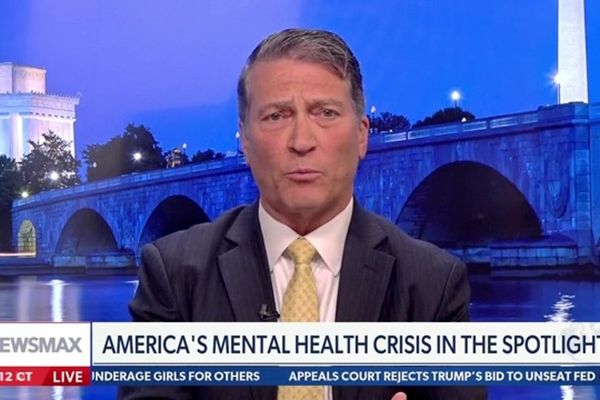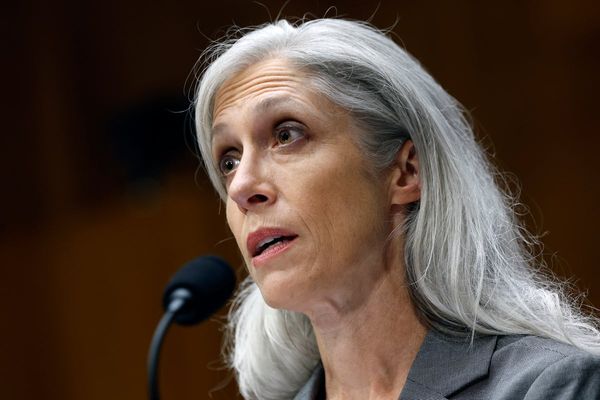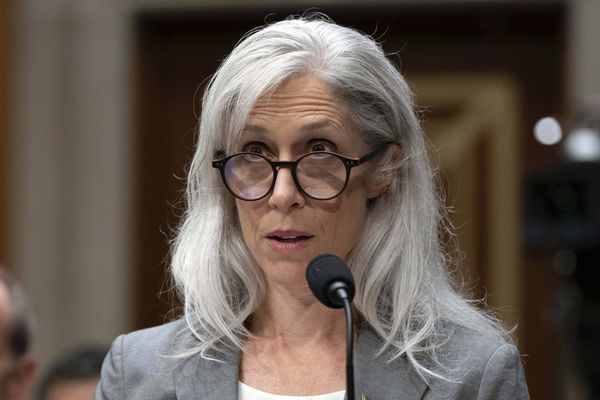The core consumer price index came in a touch cooler than Wall Street forecasts, even as Trump tariffs clearly began to push goods prices higher in June. After the CPI data, the S&P 500 initially rallied though gains faded, even as Nvidia climbed on clearance to resume sales of its H20 chip in China.
Markets have so far remained calm amid President Trump's recent threats to escalate tariffs, including a potential tripling of reciprocal tariffs on imports from the European Union to 30%. Likewise, investors haven't panicked over new Trump administration efforts to skewer Federal Reserve Chairman Jerome Powell for big cost overruns on the Fed building renovation. However, rising concerns about inflation could make those issues look more worrisome.
10:27 a.m. ET
S&P 500 Update
The S&P 500 held onto a 0.1% gain, but came off its highs after markets initially breathed a sigh of relief over lower-than-expected core inflation in June.
The 10-year Treasury yield rose four basis points to 4.47%, putting it on track for its highest close in over a month.
9:18 a.m. ET
Tariff Costs 'Strikingly Visible'
"Tariff costs are strikingly visible is June's CPI data," wrote Samuel Tombs, chief U.S. economist at Pantheon Macroeconomics. Excluding autos, core goods prices rose by 0.5%, the most since June 2022, he noted.
He highlighted a 1.8% rise in prices for sports equipment and 1.8% bump in toy prices.
Auto prices "have been unresponsive to tariffs so far," Tombs wrote. But he noted that some auto companies raised list prices towards the end of June, pointing to a jump in auto prices in July data.
Yet Tombs also noted softness in core services prices, including a 2.9% decline in accommodation prices, which should allow the Fed to resume easing in September.
9:08 a.m. ET
PPI Will Be In Focus On Wednesday
Producer price index data, out Wednesday at 8:30 a.m. ET, could be market-moving. Several inputs of the PPI feed directly into the Fed's primary inflation rate, the core PCE price index. Health care services prices are the biggest component of the core PCE price index.
While CPI medical services prices jumped in June, the Fed uses the PPI measure of health care inflation because its covers a much broader swath of economic activity, including services paid for through government and employer provided insurance.
9:06 a.m. ET
Appliance Prices Rise
Prices for household appliances rose 1.9%, the biggest monthly increase since August 2020.
8:57 a.m. ET
Strategist: Fed Should Stay On Sidelines
Seema Shah, chief global strategist at Principal Asset Management, said the June CPI data, despite "coming in softer than expected for the fifth month in a row," still doesn't provide a green light for Fed rate cuts.
"With increases in categories like household furnishings, recreation and apparel, import levies are slowly filtering through to core goods prices," Shah wrote.
Because "tariffs typically take several months to feed through to inflation data" and because of the higher tariffs recently being announced, "it would be wise for the Fed to remain on the sidelines for a few more months at least."
8:48 a.m. ET
Services Prices Climb
Prices for core services rose 0.3% on the month, a bit more than the Fed would like to see. Airline fares dipped 0.1%, suggesting stabilization after price declines in recent months.
Owner's equivalent rent, a big input for the Fed's key inflation rate, rose 0.3%. Medical services prices jumped 0.6%, with hospital service prices rising 0.7%.
8:43 a.m. ET
Food Prices Rise
While the core CPI excludes food prices, they're still worth watching, partly for a Trump tariff impact. Plus, prices for food away from home, which rose a hefty 0.4% on the month, are included in the Fed's primary inflation gauge, the core PCE price index. Prices for food consumed at home rose 0.3% in June.
8:41 a.m. ET
Goods Prices Pick Up A Bit
Core goods prices rose 0.2% on the month, following a string of tame increases of no more than 0.1%, despite Trump tariffs. New vehicle prices slipped 0.3% and used vehicle prices 0.7%, while apparel prices rose 0.4%.
8:40 a.m. ET
S&P 500 Futures Still Modestly Higher
S&P 500 futures rose 0.3% shortly after the CPI inflation report, unchanged vs. before the 8:30 a.m. ET release.
The 10-year Treasury yield was little changed at around 4.43%.
8:38 a.m. ET
Empire State Manufacturing Index Turns Positive
The New York Federal Reserve released the July Empire State Manufacturing Index at 8:30 a.m. ET, one of the more timely economic readings. The Empire index jumped to 5.5 from June's -16. Economists expected a modest rise to -10.
8:37 a.m. ET
CPI Inflation Data
The overall CPI rose 0.3% on the month, while the 12-month inflation rate perked up to 2.7% vs. a year earlier, exceeding 2.6% forecasts.
However, core prices rose 0.2% on the month, below 0.3% forecasts. Still, the 12-month core inflation rate edged up to 2.9%, as expected.
CPI Inflation Expectations
Economists expect the overall CPI to rise 0.3% in June, lifting the 12-month headline inflation rate to 2.6% from 2.4%, according to Econoday.
Core prices, excluding food and energy, also are expected to rise 0.3%, pushing the 12-month core inflation rate to 2.9% from 2.8%.
Fed Rate-Cut Odds
Ahead of the CPI, markets are pricing in just 3% odds of a Fed rate cut on July 30. Odds of a Fed rate cut rise to 61% for the Sept. 17 Fed meeting.
For the full year, markets are leaning toward at least 50 basis points in rate cuts (67.5% odds), with 32.5% odds of no more than one quarter-point move.
S&P 500
S&P 500 futures rose 0.3% ahead of the CPI, following Monday's narrow 0.1% gain.
Nvidia stock jumped more than 4% early Tuesday on the H20 AI chip news, which also lifted several peers.
The S&P 500 finished just 0.2% below its July 10 record closing high, up 6.6% year to date.







